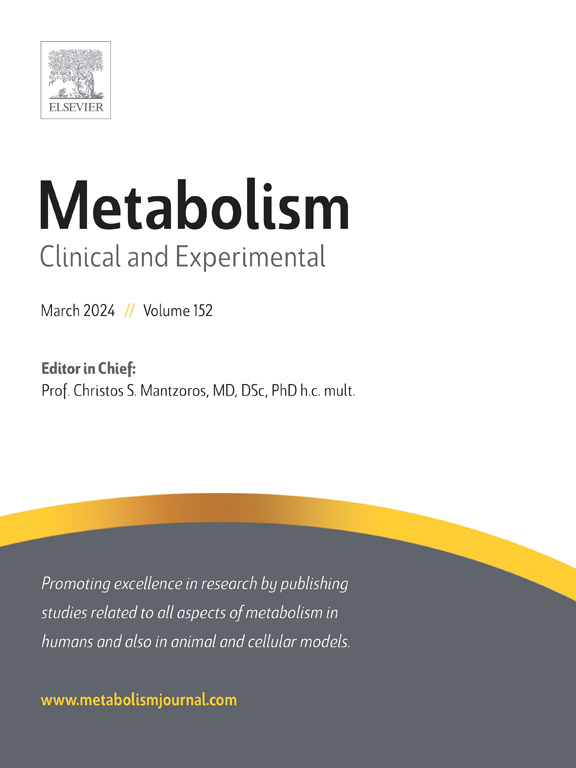Dysregulation of CRY1 impairs brain thyroid hormone pathway and promotes anxiety-like behavior in male mice
IF 11.9
1区 医学
Q1 ENDOCRINOLOGY & METABOLISM
引用次数: 0
Abstract
Background
The circadian clock system plays a crucial role in influencing mood and behavior, with the clock gene Cry1 serving as a core component of the molecular circadian clock. However, the role of CRY1 in anxiety-related behaviors and their underlying mechanisms are poorly understood.
Methods and results
In this study, we investigated the role of CRY1 in anxiety-related behaviors through various behavioral approaches, and assessed potential molecular alterations in key brain regions involved in behavioral responses. We found that male Cry1-/- (Cry1 knockout) mice developed anxiety-like behavior in both stressed and non-stressed conditions. Administration of CRY1 stabilizer KL201 significantly alleviated anxiety-like behavior in male mice. Further studies suggested involvement of the brain thyroid hormone signaling in CRY1 regulation of anxiety-like behavior, evidenced by markedly reduced brain T3 levels relation to down-regulation of OATP1C1 and DIO2 mediated by CRY1, which underlies neurogenesis deficits and contributes to anxiety. Subsequent in vivo and cell-based experiments confirmed that CRY1 positively regulates the expression of OATP1C1 and DIO2. Mechanistically, CRY1 regulates OATP1C1 and DIO2 through regulating the transcriptional activity of E4BP4. E4BP4 trans-inactivates OATP1C1 and DIO2 via direct binding to its specific response element in the gene promoters.
Conclusion
These findings underscore the critical role of CRY1 in regulating thyroid hormone and anxiety, providing insight into the underlying pathogenesis and potential treatment strategies for mood disorders.

CRY1的失调损害雄性小鼠脑甲状腺激素通路并促进焦虑样行为
生物钟系统在影响情绪和行为方面起着至关重要的作用,生物钟基因Cry1是分子生物钟的核心组成部分。然而,CRY1在焦虑相关行为中的作用及其潜在机制尚不清楚。方法与结果本研究通过多种行为学方法探讨了CRY1在焦虑相关行为中的作用,并评估了参与行为反应的关键脑区可能发生的分子改变。我们发现雄性Cry1-/- (Cry1敲除)小鼠在应激和非应激条件下都表现出焦虑样行为。给药CRY1稳定剂KL201可显著减轻雄性小鼠的焦虑样行为。进一步的研究表明,脑甲状腺激素信号参与了CRY1对焦虑样行为的调节,证明了脑T3水平的显著降低与CRY1介导的OATP1C1和DIO2的下调有关,这是神经发生缺陷和焦虑的基础。随后的体内和细胞实验证实,CRY1正调控OATP1C1和DIO2的表达。在机制上,CRY1通过调控E4BP4的转录活性来调控OATP1C1和DIO2。E4BP4反式通过直接结合基因启动子中的特异性应答元件使OATP1C1和DIO2失活。结论这些发现强调了CRY1在调节甲状腺激素和焦虑中的重要作用,为情绪障碍的潜在发病机制和潜在治疗策略提供了新的思路。
本文章由计算机程序翻译,如有差异,请以英文原文为准。
求助全文
约1分钟内获得全文
求助全文
来源期刊

Metabolism: clinical and experimental
医学-内分泌学与代谢
CiteScore
18.90
自引率
3.10%
发文量
310
审稿时长
16 days
期刊介绍:
Metabolism upholds research excellence by disseminating high-quality original research, reviews, editorials, and commentaries covering all facets of human metabolism.
Consideration for publication in Metabolism extends to studies in humans, animal, and cellular models, with a particular emphasis on work demonstrating strong translational potential.
The journal addresses a range of topics, including:
- Energy Expenditure and Obesity
- Metabolic Syndrome, Prediabetes, and Diabetes
- Nutrition, Exercise, and the Environment
- Genetics and Genomics, Proteomics, and Metabolomics
- Carbohydrate, Lipid, and Protein Metabolism
- Endocrinology and Hypertension
- Mineral and Bone Metabolism
- Cardiovascular Diseases and Malignancies
- Inflammation in metabolism and immunometabolism
 求助内容:
求助内容: 应助结果提醒方式:
应助结果提醒方式:


